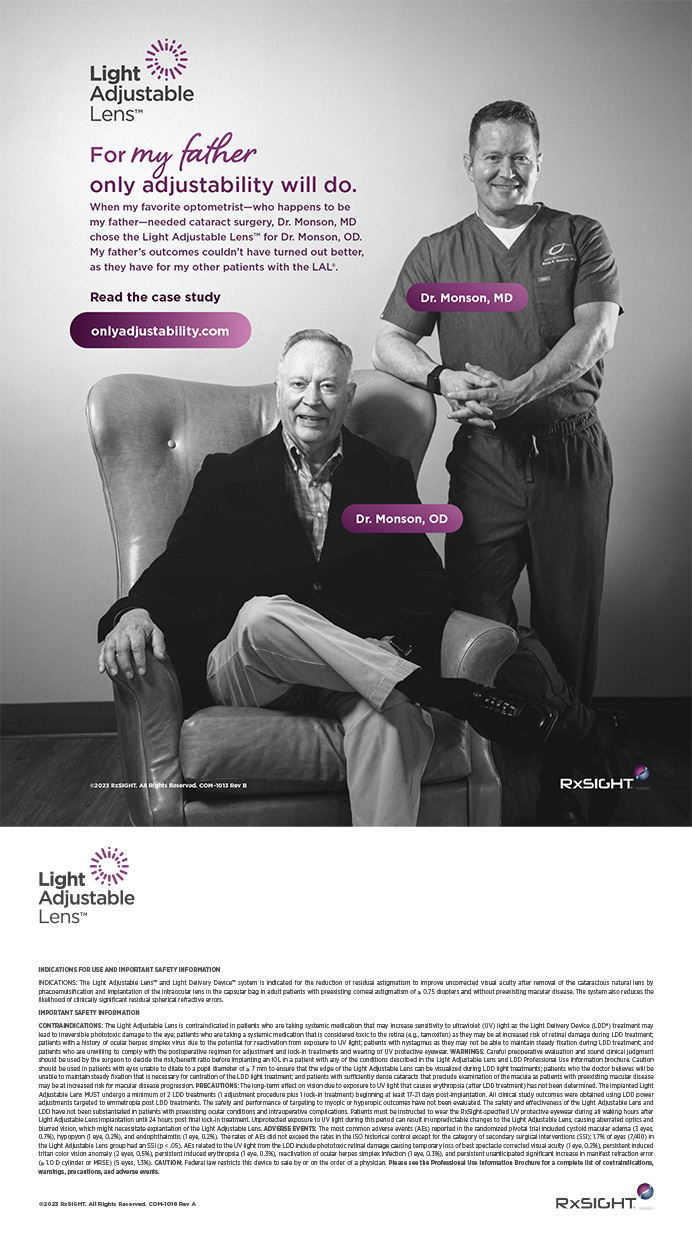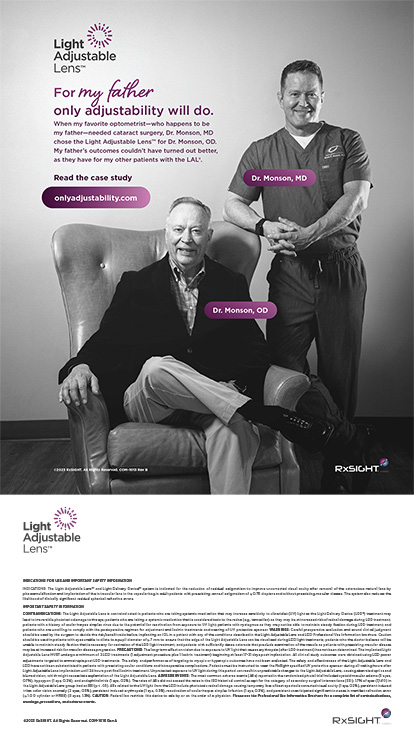
Trying to keep pace with new technology can be overwhelming. One of the best ways for me to keep my finger on the pulse and to glimpse the future is to observe my children. I have three boys, aged 15, 12, and 9 years. Most shocking to me is how they communicate. Digital devices permeate their lives, making their social development and experiences much different than my own childhood. A huge part of their social lives is virtual, comprising text messages, Instagram, Snapchat, and even communication between fictional characters in the online communal games they play. I get excited when I see them using FaceTime (Apple) with a friend, because they are sort of communicating face to face. I have noticed that my sons sometimes become so absorbed in digital life that they experience a withdrawal period when asked to come back to the real world and interact personally with peers or adults. Actually, I have noticed this behavioral adjustment at times in adults, including myself.
Ophthalmic practices are not immune to these changing patterns of behavior. When my practice first implemented electronic health records (EHRs) 2 years ago, I had to completely change how I worked and saw patients. Instead of my looking them in the eye, listening, and having a meaningful exchange with words and body language, EHRs asked me to spend the bulk of my time in the examination room interfacing with a computer. My colleagues and I agreed to confront this problem by employing scribes, and these professionals are with me during every encounter I have with patients. A potential negative is that my ability to use EHRs is rudimentary at best. On the plus side, the presence of a scribe allows me to focus on building relationships with my patients. In the field of refractive cataract surgery, setting realistic expectations for patients, educating them, and building their trust are imperative. I find it hard to imagine how I could efficiently accomplish these goals if I were tied to a computer.
The next generation of doctors and patients will probably communicate virtually, and their demand for face-to-face interaction will be lower. This is a world to which they are already becoming accustomed, and technology drives it. With automated diagnostic and laser systems, robotic surgical devices, and computer-driven implants that deliver perfect outcomes and complete independence from glasses, technology may one day allow doctors to abandon personal interaction with patients altogether. Perhaps that vision of the future is a little far-fetched, but I have made my point.
I am not passing judgment but acknowledging the changes underway. We ophthalmologists are all navigating these waters in our own way in our practices. We are developing skills that were not a part of our education in college or graduate school. There is no online course or audio book to serve as a manual. Ultimately, to be successful, we must enjoy what we do. The hardest part for many of us may be maintaining job satisfaction despite changes forced upon us. Solutions exist, and it is up to each of us to share them when we find them … digitally, of course. n

Robert J. Weinstock, MD
Chief Medical Editor


